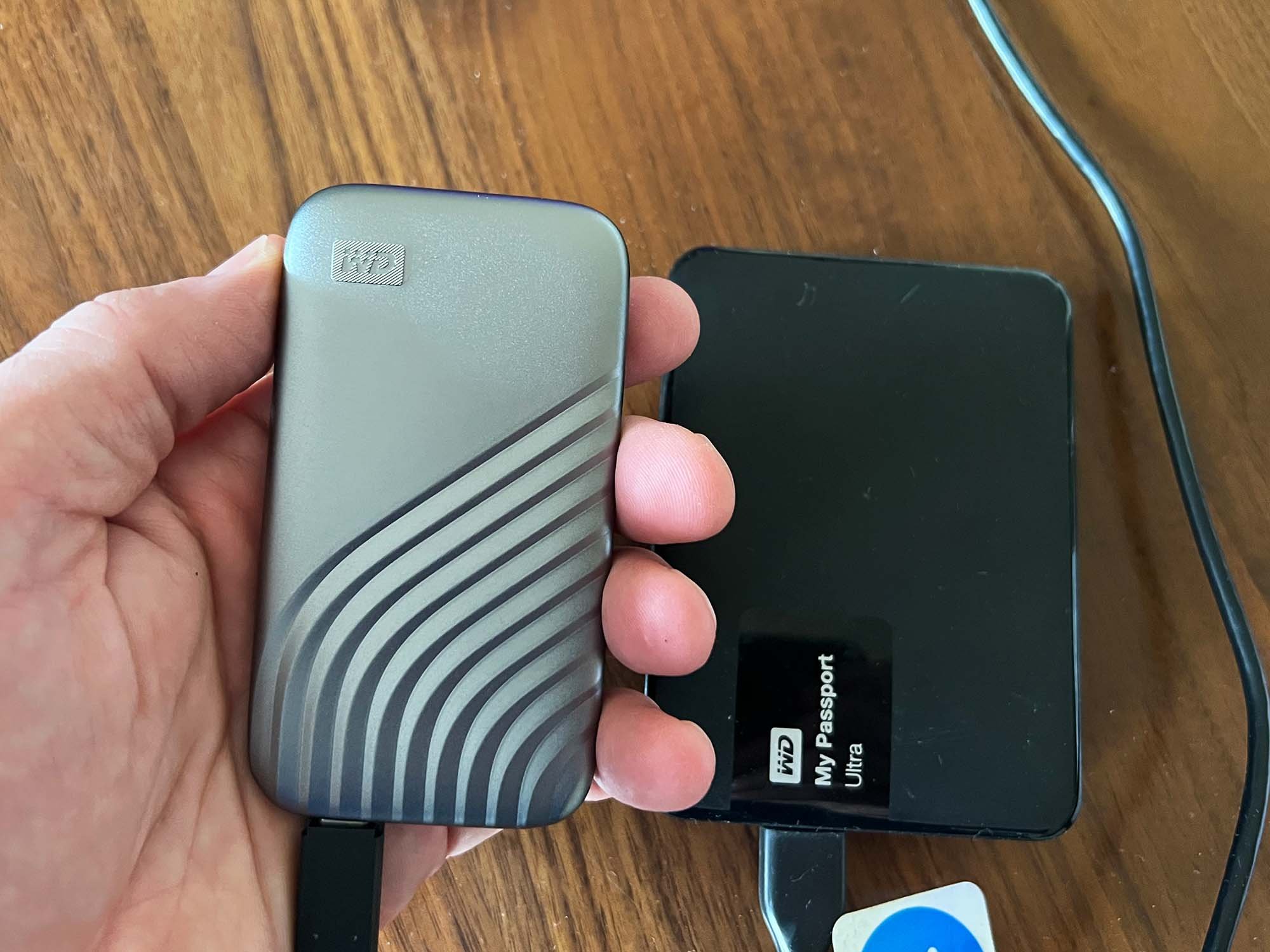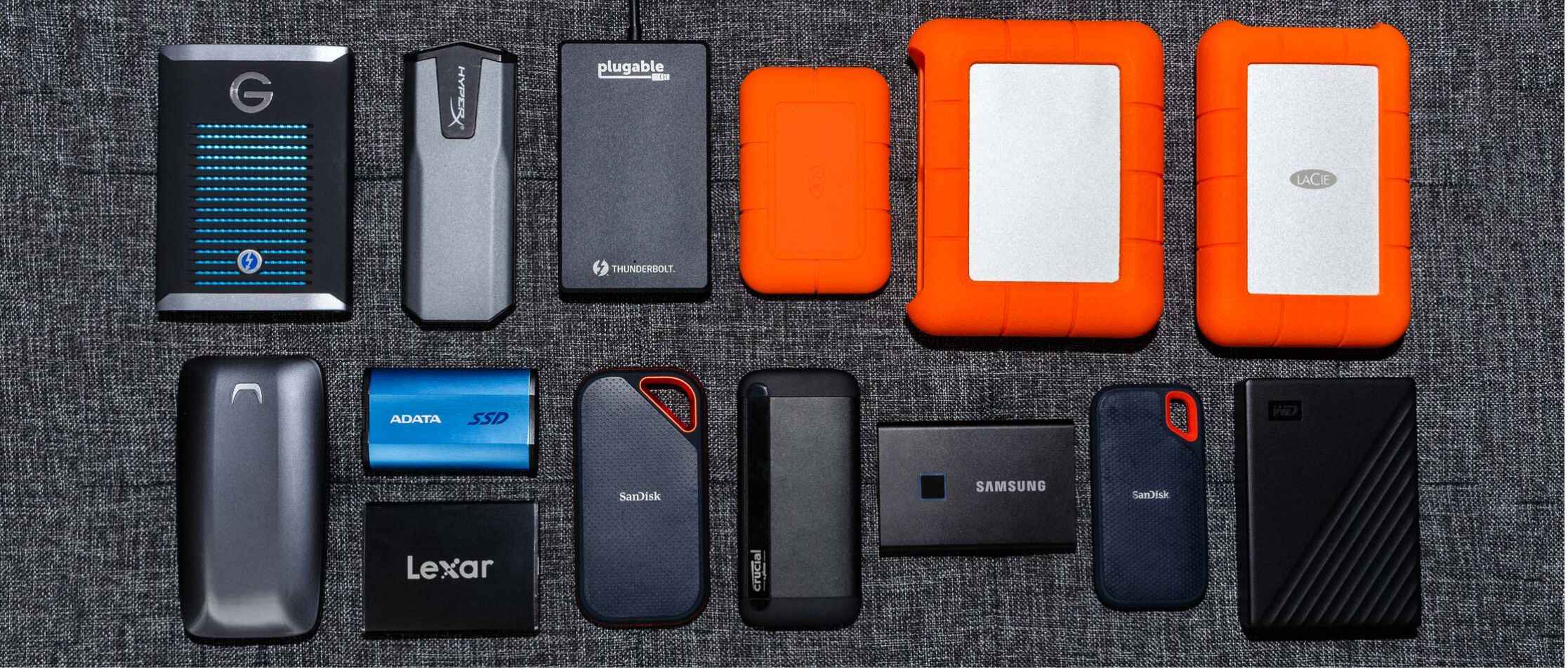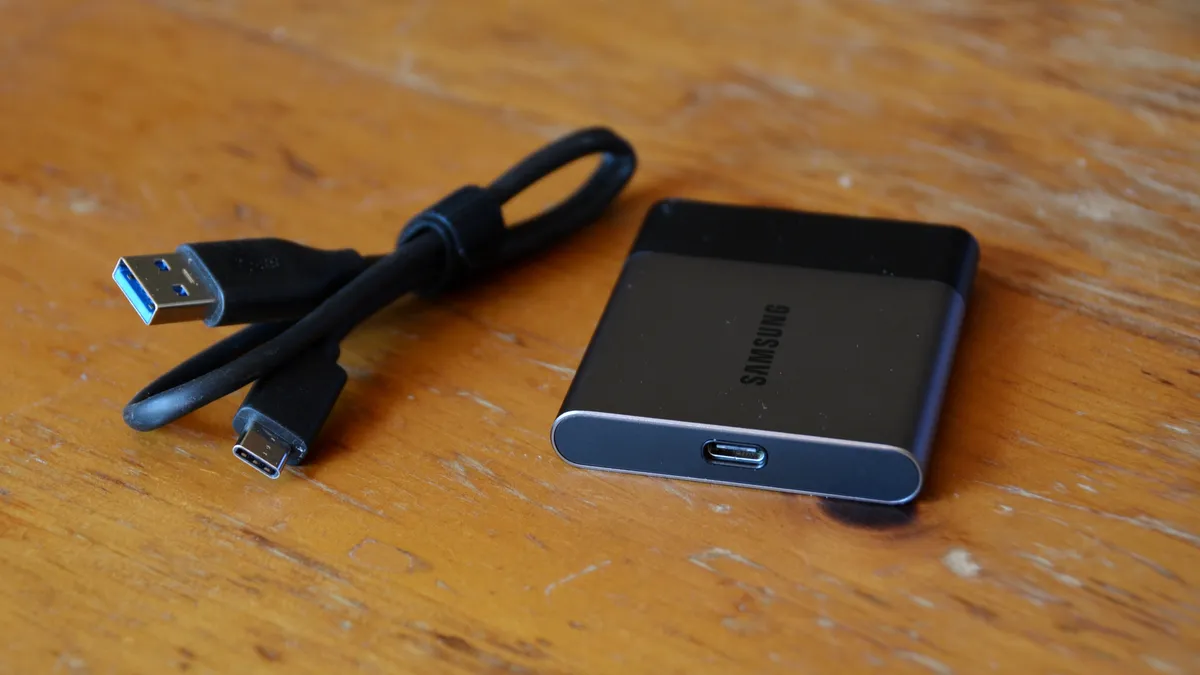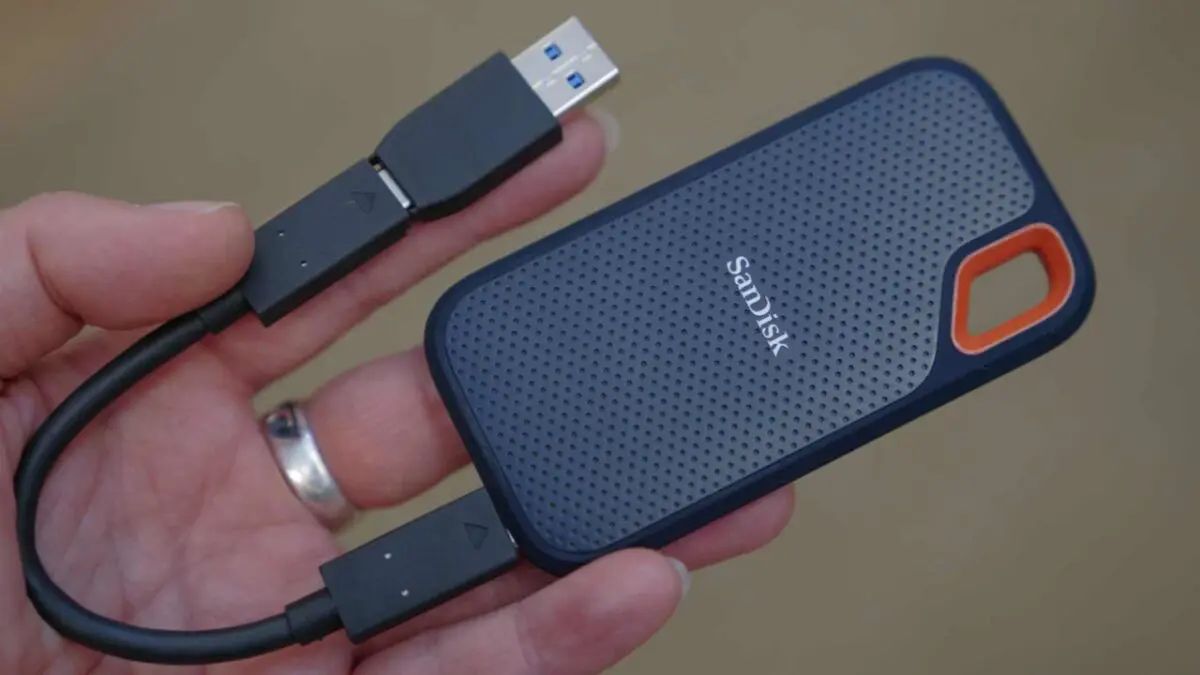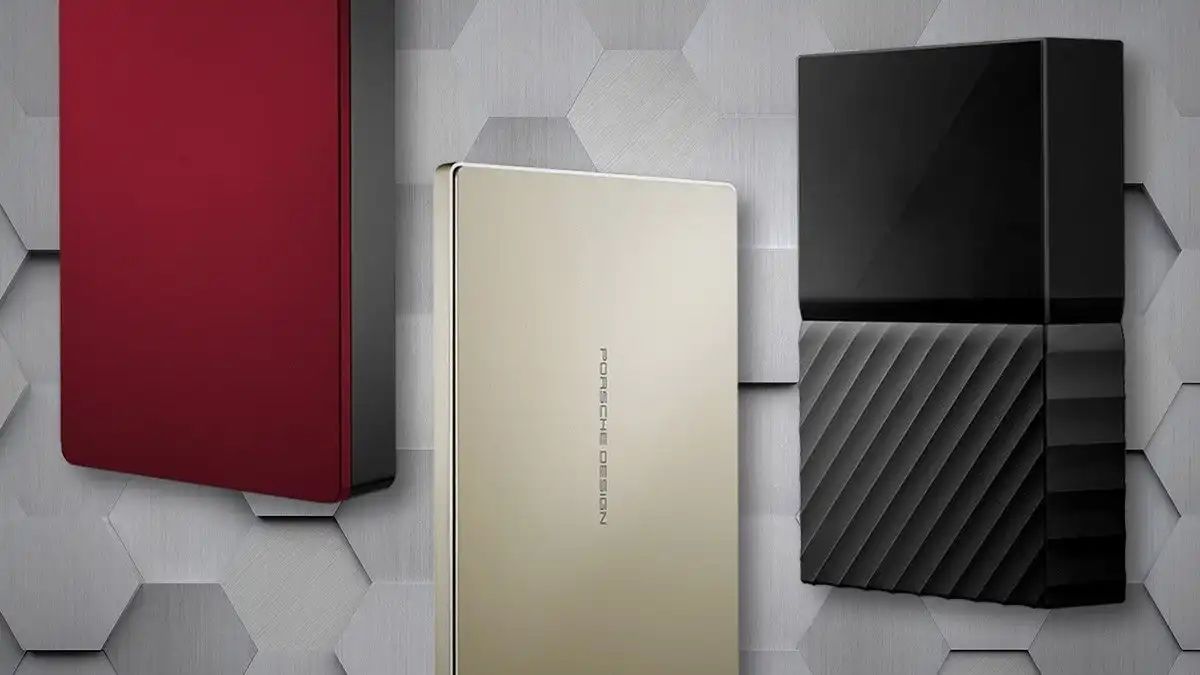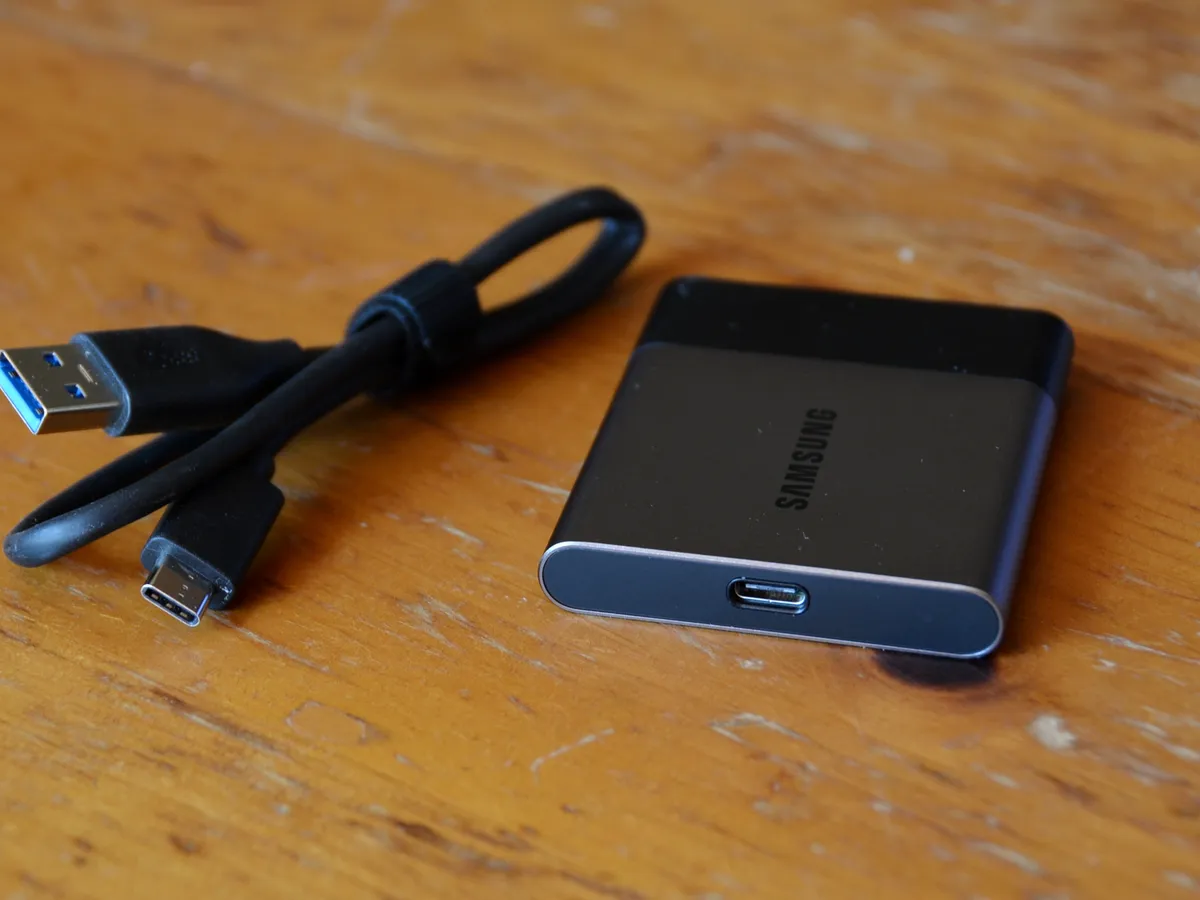Introduction
An external SSD (Solid State Drive) is a popular storage device known for its speed, durability, and portability. It has become a preferred choice for individuals and businesses looking for reliable and efficient data storage solutions. However, one common question that arises when considering an external SSD is, “How long does it last?” In this article, we will explore the lifespan of external SSDs, factors that affect their longevity, and ways to maximize their lifespan.
External SSDs are designed to provide long-lasting performance, but their lifespan can vary depending on several factors. Understanding these factors can help you make informed decisions when selecting and using an external SSD.
SSDs are fundamentally different from traditional hard disk drives (HDDs) as they utilize NAND flash memory technology instead of mechanical spinning disks. This technology allows SSDs to offer faster data access, improved power efficiency, and greater resistance to physical shock and data loss. However, like any electronic device, SSDs have a finite lifespan.
It’s important to note that the lifespan of an external SSD is primarily determined by the wear and tear that occurs during data read and write operations. Each time data is written and erased on an SSD, it degrades the NAND flash memory cells, eventually rendering them unusable. This degradation process occurs over a period of time and is measured in terms of “write endurance.”
In the following sections, we will delve into the factors that can affect the lifespan of your external SSD and discuss ways to maximize its longevity. By understanding these factors and adopting appropriate usage and maintenance practices, you can ensure that your external SSD serves you well for years to come.
Understanding SSD Lifespan
To understand the lifespan of an external SSD, it is essential to grasp the concept of write endurance. Write endurance refers to the number of times data can be written and erased on an SSD before its performance and reliability are compromised.
Each SSD is equipped with a controller that manages the read and write operations, as well as wear leveling algorithms that evenly distribute the data across the NAND flash memory cells. These algorithms ensure that the wear on each cell is balanced, preventing premature failure of any specific cell.
The lifespan of an external SSD is typically measured in terms of Terabytes Written (TBW) or Drive Writes Per Day (DWPD). TBW signifies the total amount of data that can be written to the SSD over its lifetime, while DWPD represents the average number of times the drive can be filled to capacity per day before reaching its expected lifespan.
Modern SSDs have significantly improved write endurance compared to earlier models, thanks to advancements in NAND flash memory technology and firmware enhancements. Consequently, the typical lifespan of an external SSD can range from several hundred terabytes to several petabytes, depending on the drive’s specifications.
Another crucial factor to consider is the difference between Multi-Level Cell (MLC) and Triple-Level Cell (TLC) NAND flash memory. MLC SSDs generally offer higher write endurance and greater longevity compared to TLC SSDs. While TLC SSDs are more cost-effective and offer higher storage capacities, they may have a shorter lifespan due to lower write endurance.
It is also worth noting that modern SSDs are equipped with over-provisioning, which allocates a portion of the drive’s capacity for the wear leveling algorithms and garbage collection. This ensures that the SSD maintains optimal performance throughout its lifespan and mitigates the impact of NAND flash degradation.
By having a clear understanding of the write endurance, NAND flash memory types, and over-provisioning, you can make an informed decision while choosing an external SSD that suits your specific needs.
Factors that Affect External SSD Lifespan
Several factors can influence the lifespan of an external SSD. By understanding these factors, you can take proactive measures to prolong the longevity of your SSD and ensure optimal performance. Let’s take a closer look at the key factors that affect the lifespan of an external SSD:
- NAND Flash Memory Type: The type of NAND flash memory used in an SSD plays a significant role in its lifespan. As mentioned earlier, SSDs can come with MLC or TLC NAND flash memory. MLC SSDs generally offer higher write endurance and are designed for more intensive workloads, making them better suited for applications that involve frequent read and write operations. TLC SSDs, on the other hand, provide higher storage capacities but may have lower write endurance compared to MLC SSDs.
- Write Endurance: Write endurance is the measure of how many times data can be written and erased on an SSD before it starts to degrade. The write endurance is typically specified by the manufacturer and is expressed as the total terabytes written (TBW) or drive writes per day (DWPD) over the expected lifespan of the drive. Higher write endurance ensures a longer lifespan for the SSD.
- Operating Temperature: Extreme temperatures can have a detrimental effect on the lifespan of an external SSD. High temperatures can accelerate NAND flash degradation, while extremely low temperatures can affect the overall performance of the drive. It is recommended to operate the SSD within the recommended temperature range provided by the manufacturer to maximize its lifespan.
- Power Cycling: Power cycling refers to the process of turning the SSD on and off. Frequent power cycling can impact the lifespan of an SSD as it increases the wear on the NAND flash memory cells. It is advisable to minimize unnecessary power cycles to prolong the lifespan of your SSD.
- Data Retention: An SSD requires an active power supply to maintain data integrity. If an external SSD is left unused for an extended period, the stored data may degrade over time. It is recommended to power up the SSD periodically to ensure data retention and longevity.
- Usage Patterns: The usage patterns of an external SSD can significantly affect its lifespan. Workloads involving heavy read and write operations, such as video editing or large file transfers, can shorten the lifespan of the SSD. On the other hand, light usage patterns that involve mainly reading data will generally result in a longer lifespan.
It is important to keep these factors in mind while selecting, using, and maintaining your external SSD. By considering these factors and implementing best practices, you can effectively extend the lifespan of your SSD and ensure reliable performance throughout its usage.
NAND Flash Memory Type
The type of NAND flash memory used in an external SSD has a significant impact on its lifespan. NAND flash memory technology has evolved over the years, resulting in different types of memory cells with varying levels of performance and endurance.
There are two common types of NAND flash memory used in SSDs: Multi-Level Cell (MLC) and Triple-Level Cell (TLC).
MLC NAND flash memory stores multiple bits of data in each memory cell, allowing for faster read and write speeds. It also provides higher write endurance compared to TLC NAND flash memory. MLC SSDs are typically designed for more demanding workloads and offer better longevity. However, MLC SSDs are generally more expensive and have lower storage capacities compared to TLC SSDs.
TLC NAND flash memory, on the other hand, stores three bits of data in each memory cell. While TLC SSDs are more cost-effective and offer higher storage capacities, they typically have lower write endurance compared to MLC SSDs. This makes them more suitable for moderate workloads or applications that involve predominantly read operations.
It’s important to consider your specific needs and usage patterns when selecting an external SSD with the appropriate NAND flash memory type. If you require faster performance and higher write endurance, an MLC-based SSD would be an ideal choice. However, if cost-effectiveness and higher storage capacity are your primary concerns, a TLC-based SSD may be more suitable.
It’s worth noting that advancements in NAND flash memory technology have led to the development of newer types, such as Quad-Level Cell (QLC) and 3D NAND. QLC SSDs offer even higher storage capacities but typically have lower write endurance compared to MLC and TLC SSDs. 3D NAND, which stacks memory cells vertically, provides higher storage densities and improved performance compared to traditional planar NAND flash memory.
Ultimately, the choice of NAND flash memory type depends on your specific requirements, budget, and expected workload. By selecting the appropriate NAND flash memory type, you can ensure a good balance between performance, longevity, and cost for your external SSD.
Write Endurance
Write endurance is a crucial factor that affects the lifespan of an external SSD. It refers to the number of times data can be written and erased on the drive before it starts to degrade. Each write operation causes wear on the NAND flash memory cells, eventually leading to a decrease in performance and reliability.
Manufacturers typically specify the write endurance of an SSD in terms of total terabytes written (TBW) or drive writes per day (DWPD). TBW represents the total amount of data that can be written to the SSD over its lifetime, while DWPD indicates the average number of times the drive can be filled to capacity per day before reaching its expected lifespan.
The write endurance of an external SSD varies depending on the specific drive model and the NAND flash memory used. SSDs with higher write endurance can withstand more extensive write operations and have longer lifespans.
It’s important to note that write endurance is not the sole determinant of an SSD’s lifespan. Other factors, such as the quality of the NAND flash memory, firmware optimizations, and handling of the SSD, also play crucial roles.
To maximize the lifespan of an external SSD with limited write endurance, there are several practices you can adopt:
- Optimize Operating System Settings: Tweaking your operating system settings can reduce unnecessary writes to the SSD. For example, disabling features like file indexing or system restore points can help minimize write activity.
- Utilize Compression and Deduplication: By enabling data compression and deduplication technologies, you can reduce the amount of data being written to the SSD, effectively extending its lifespan.
- Manage Temporary and Cache Files: Regularly clearing temporary and cache files can reduce write activity on the SSD.
- Implement Regular Data Backups: Creating regular backups of your data can minimize the need for frequent write operations, ensuring the longevity of your SSD.
- Avoid Frequent Full Drive Writes: Frequent full drive writes, where the SSD is consistently filled to capacity and erased, can accelerate wear on the NAND flash memory cells. If possible, avoid operating your SSD at maximum capacity for extended periods.
By following these practices, you can significantly prolong the lifespan of your SSD, even if it has limited write endurance. It’s crucial to be mindful of your usage patterns and optimize your workflow to mitigate excessive write operations on the SSD.
Operating Temperature
The operating temperature of an external SSD plays a critical role in its lifespan and overall performance. Extreme temperatures, whether too high or too low, can have detrimental effects on the NAND flash memory and other components of the drive.
High temperatures can accelerate the degradation of the NAND flash memory cells, leading to a shorter lifespan. Prolonged exposure to high temperatures can result in data corruption, reduced performance, and even permanent damage to the SSD.
On the other hand, extremely low temperatures can negatively impact the overall performance of the SSD. Cold temperatures can cause the SSD to become sluggish and may result in data access issues.
To ensure the longevity and optimal performance of your external SSD, it is crucial to operate it within the recommended temperature range provided by the manufacturer. Generally, the recommended temperature range for SSD operation falls between 0°C and 70°C (32°F to 158°F).
Here are some tips to help you maintain a suitable operating temperature for your external SSD:
- Avoid Extreme Environments: Keep your SSD away from environments with excessively high or low temperatures. Avoid exposure to direct sunlight, intense heat sources, and extreme cold environments.
- Proper Ventilation: Ensure that your external SSD has adequate airflow and ventilation. Avoid covering the SSD or placing it in a confined space where heat can accumulate.
- Avoid Overheating: If you notice that your SSD is getting excessively hot during operation, it can be a sign of inadequate ventilation or workload exceeding the drive’s capabilities. In such cases, consider using cooling solutions like external fans or heat sinks.
- Transport with Care: When transporting your external SSD, avoid leaving it in excessively hot or cold environments for extended periods. Allow the drive to reach its optimal operating temperature before using it.
- Monitor Temperature: Some SSD management software provides the ability to monitor the temperature of the drive. Regularly check the temperature of your SSD to ensure it is within the recommended range.
By maintaining the operating temperature within the specified range, you can help extend the lifespan of your external SSD and ensure its optimal performance for years to come.
Power Cycling
The frequency at which an external SSD is powered on and off, also known as power cycling, can have an impact on its lifespan. While SSDs are designed to handle power cycling, excessive or unnecessary power cycling can contribute to wear and tear on the drive’s components, including the NAND flash memory.
Power cycling involves the process of turning the SSD on and off. Each power cycle introduces stress on the NAND flash memory cells, which can eventually lead to degradation over time.
To maximize the lifespan of your external SSD and minimize the impact of power cycling, consider the following practices:
- Minimize Unnecessary Power Cycles: Avoid turning your SSD on and off frequently if it’s not required. Instead, keep your SSD powered on if you anticipate using it frequently within a short period of time.
- Ensure Proper Shutting Down: When you decide to power off your SSD, ensure that you follow the recommended shutdown procedure provided by the operating system. This allows the SSD to complete any ongoing operations and ensures data integrity.
- Avoid Sudden Loss of Power: Sudden power loss, such as unplugging the SSD without proper shutdown, can cause data corruption and potentially impact the SSD’s lifespan. Always safely eject or shut down your external SSD before unplugging it.
- Use Standby or Sleep Modes: If your external SSD supports it, utilize standby or sleep modes instead of completely powering off the drive. These modes allow the SSD to conserve power while remaining in a low-power state, ready for quick access when needed.
- Keep Firmware Updated: SSD manufacturers regularly release firmware updates that provide improvements, including optimizing power management. It is recommended to keep your SSD firmware up-to-date to ensure optimal performance and reliability.
Implementing these practices can help minimize unnecessary stress on your external SSD caused by power cycling. By doing so, you can prolong the lifespan of your SSD and ensure its continued performance and reliability.
Data Retention
Data retention is an important consideration when it comes to the lifespan of an external SSD. Unlike traditional hard disk drives (HDDs), which retain data even when powered off, SSDs require an active power supply to maintain data integrity.
If an external SSD is left unused for an extended period, the stored data may degrade over time. This degradation can occur due to various factors, including charge leakage in the NAND flash memory cells.
To ensure data retention and maximize the lifespan of your external SSD, consider the following practices:
- Power up the SSD Periodically: It is advisable to power up your external SSD periodically, even if you’re not actively using it. By doing so, you provide the necessary power to maintain the integrity of the stored data. Aim to power up the SSD at least once every few months.
- Utilize Power-saving Features: Some external SSDs come with power-saving features that automatically put the drive into a low-power mode after a specified period of inactivity. By enabling these features, you can strike a balance between data retention and power consumption.
- Store SSD in Suitable Conditions: When storing your external SSD, ensure that it is kept in a cool, dry, and stable environment. Avoid exposing the drive to extreme temperatures, humidity, and direct sunlight, as these can negatively impact data retention.
- Create Data Backups: Creating regular backups of the data stored on your external SSD is essential. This not only provides an additional layer of protection against data loss but also allows you to preserve the contents of the SSD in case of any unforeseen issues.
- Monitor Health and Performance: Keep track of your SSD’s health and performance using monitoring software provided by the SSD manufacturer. This allows you to identify any potential issues early on and take necessary actions to protect your data.
By implementing these practices, you can ensure the retention of your data and extend the lifespan of your external SSD. Regularly powering up and maintaining optimal storage conditions will help preserve the integrity of your data and enhance the overall reliability of the drive.
Usage Patterns
The usage patterns of an external SSD can significantly impact its lifespan. The nature and intensity of the workload placed on the SSD play a crucial role in determining its longevity. It’s important to understand how different usage patterns can affect the performance and lifespan of your SSD.
Workloads involving heavy read and write operations can exert more stress on the NAND flash memory cells, potentially shortening the lifespan of the SSD. Conversely, lighter usage patterns that involve mainly reading data and occasional write operations can result in a longer lifespan for the SSD.
Here are some factors to consider regarding your usage patterns and their impact on the lifespan of your external SSD:
- Workload Intensity: Consider the type of tasks you’ll be performing and the workload intensity involved. For example, applications such as video editing, gaming, or running virtual machines often involve high write operations, which can reduce the lifespan of the SSD compared to lighter workloads like browsing or document editing.
- Frequent Large File Transfers: If your work involves frequent large file transfers, such as moving large media files or performing regular backups, it can accelerate wear on the SSD. In these cases, consider implementing strategies like utilizing compression or deduplication to reduce the amount of data being written to the SSD.
- Optimizing Workflow: Review your workflow and identify areas where write operations can be minimized. For example, moving temporary files and caches to a separate drive or utilizing cloud storage for non-critical data can help reduce the workload on the SSD.
- Using SSD for Operating System and Programs: Utilizing your external SSD for hosting the operating system and frequently used applications can provide faster boot times and application launches. However, it may result in more write operations on the SSD. Consider balancing the benefits offered by faster performance against the potential impact on the SSD’s lifespan.
- Avoiding Excessive Full Drive Writes: Frequent full drive writes, where the SSD is consistently filled to its capacity and then erased, can accelerate wear on the NAND flash memory cells. If possible, avoid running your SSD at maximum capacity for extended periods and consider managing your data storage to allow for more efficient wear leveling across the drive.
By considering your usage patterns and implementing strategies to reduce excessive write operations, you can effectively extend the lifespan of your external SSD. It’s essential to find a balance between performance and longevity while ensuring that the SSD meets your specific requirements.
Maximizing the Lifespan of Your External SSD
To ensure that your external SSD lasts as long as possible and continues to perform optimally, it’s essential to adopt certain practices that can maximize its lifespan. By following these guidelines, you can increase the longevity of your SSD:
- Regularly Update Firmware: Keep your SSD’s firmware up-to-date by installing the latest updates provided by the manufacturer. Firmware updates often include performance enhancements, bug fixes, and optimizations that can improve the SSD’s lifespan.
- Maintain Optimal Operating Temperature: As discussed earlier, extreme temperatures can have a detrimental effect on the lifespan of your SSD. Ensure that your SSD operates within the manufacturer’s recommended temperature range to prevent unnecessary wear and tear on the drive.
- Avoid Overloading the Drive: While SSDs can handle a high workload, it’s important to avoid consistently pushing the drive to its maximum capacity. Overloading the drive can negatively impact its lifespan. Keep track of your storage usage and consider offloading infrequently accessed data to other storage solutions.
- Implement Proper Power Management: Minimize unnecessary power cycling by keeping your external SSD powered on when not in use for extended periods. Follow proper shutdown procedures to avoid sudden loss of power, which can potentially lead to data corruption.
- Perform Regular Data Backups: Creating backups of your data is crucial for protecting against data loss. Regularly back up your important files and data to external storage or cloud-based solutions.
- Use Trim and Garbage Collection: Trim and garbage collection are features available in most operating systems and SSD management software. These features help optimize the SSD’s performance by allowing the drive to efficiently manage unused space and minimize write amplification.
- Avoid Physical Shock and Rough Handling: Treat your external SSD with care to prevent physical damage or shock. Avoid dropping or subjecting the drive to rough handling, as it can cause internal components to fail and shorten its lifespan.
- Monitor SSD Health: Keep an eye on the health of your external SSD by utilizing monitoring software provided by the manufacturer. Regularly check the SMART (Self-Monitoring, Analysis, and Reporting Technology) status of your SSD and address any signs of potential issues promptly.
By adhering to these practices, you can prolong the lifespan of your external SSD and maintain its performance and reliability over time. It’s important to note that while SSD technology has become increasingly durable, it is still subject to wear and tear. By incorporating these guidelines into your SSD usage and maintenance routine, you can maximize the lifespan of your SSD and enjoy its benefits for years to come.
Conclusion
Understanding the lifespan of an external SSD and the factors that affect its longevity is crucial for making informed decisions when selecting, using, and maintaining these storage devices. SSDs provide enhanced speed, durability, and portability compared to traditional hard disk drives, but their lifespan is influenced by various factors.
In this article, we’ve explored the factors that impact the lifespan of an external SSD, including the type of NAND flash memory used, write endurance, operating temperature, power cycling, data retention, and usage patterns. By considering these factors and implementing best practices, you can maximize the lifespan of your external SSD and enjoy reliable performance over the long term.
Choosing the right NAND flash memory type, whether it’s MLC or TLC, can offer a balance between performance, longevity, and cost depending on your specific needs. Understanding the write endurance of your SSD and adopting practices to minimize excessive writes can help extend its lifespan and maintain optimal performance.
Operating the SSD within the recommended temperature range, minimizing unnecessary power cycling, and paying attention to data retention are additional factors that can help prolong the lifespan of an external SSD. Additionally, considering your usage patterns, optimizing your workflow, and taking steps to prevent physical damage can contribute to the long-term durability of your SSD.
Remember to regularly update the SSD’s firmware, perform data backups, utilize trim and garbage collection, and monitor the health of the SSD using provided software. By following these guidelines, you can ensure that your external SSD operates at its best and lasts for an extended period.
Ultimately, the lifespan of an external SSD is influenced by how you use and care for it. By being mindful of the factors discussed in this article and implementing effective practices, you can maximize the lifespan of your external SSD, ensuring reliable performance and data storage for your needs.









